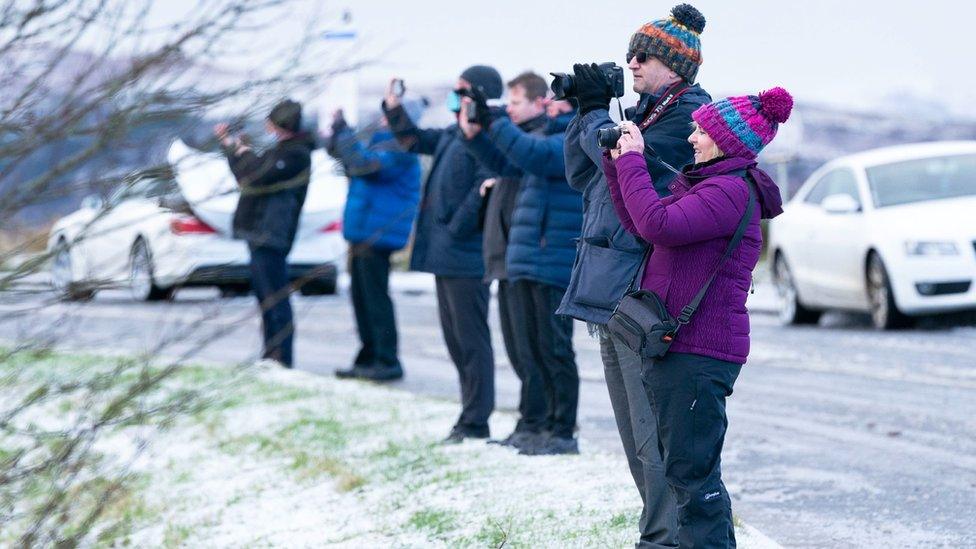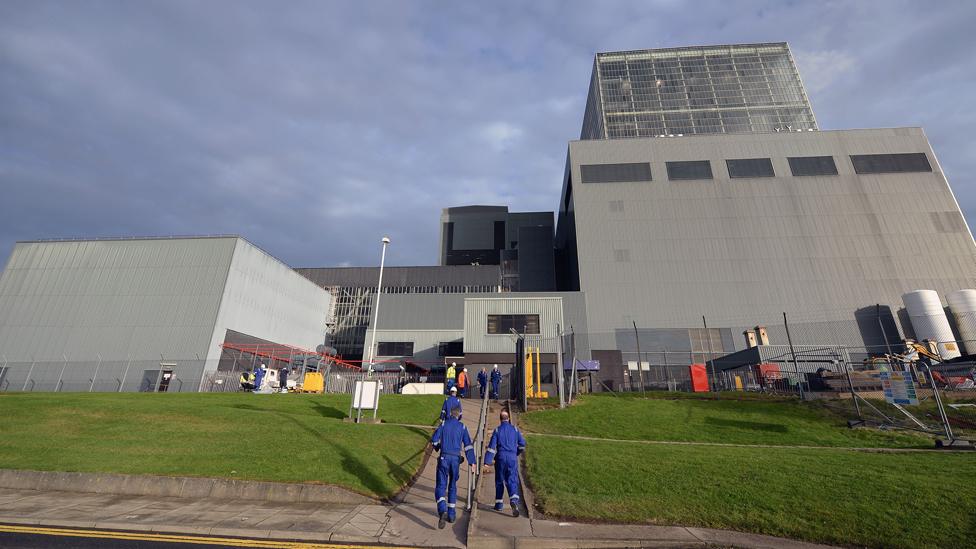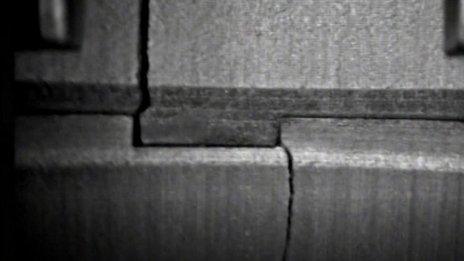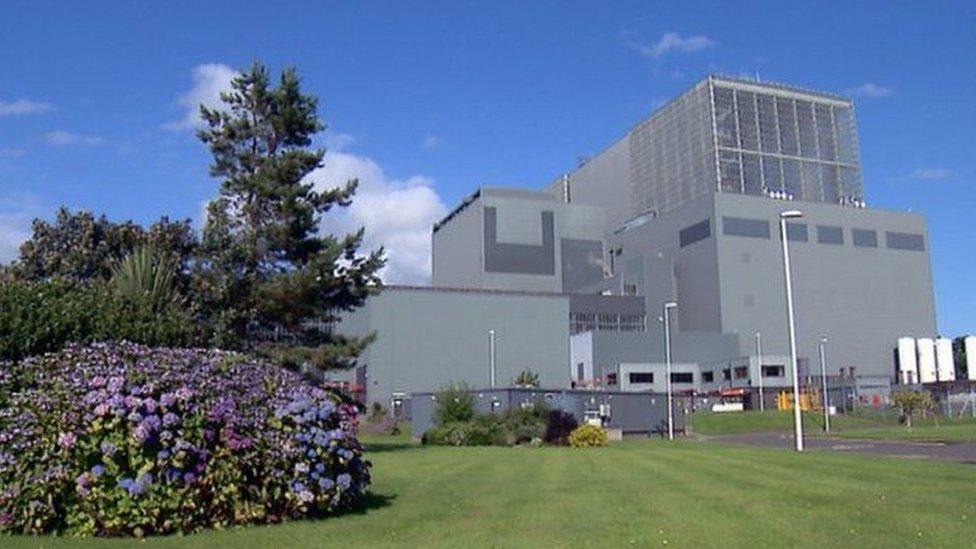Hunterston B nuclear power plant closes down after 46 years
- Published

Steam which would have been used to turn the turbines is released from the reactor at Hunterston B
The Hunterston B nuclear power plant in North Ayrshire has been shut down for the final time after generating electricity for 46 years.
The plant's original 25-year lifespan was extended by more than two decades.
But the final closure was brought forward after cracks were found in the graphite bricks which make up the reactor cores.
A small group of former workers gathered at the power station at midday to see the final shut down.
The site, owned by EDF Energy, will now begin a three-year process of defueling with the spent nuclear fuel sent to Sellafield for reprocessing.
After that, the site will be handed over to the Nuclear Decommissioning Authority.
The 480-strong workforce at Hunterston will be cut by a quarter during defueling but the company said those 125 employees would either retire or be redeployed to other sites.
Station director Paul Forrest said: "It was originally thought Hunterston B would run for 25 years but investment in the plant and the people who work here mean we've been able to safely extend that to 46 years.
"This is an incredible achievement and everyone here is proud of what the station has accomplished."
Plans had been made to operate Hunterston until 2023 but the hairline cracks in the graphite bricks have shortened the life of the power station.

Hunterston B soon after it began generating power in 1976
The cracks were first spotted in two graphite bricks in the reactor in 2014.
By 2018, a total of 350 bricks had been affected although the Office for Nuclear Regulation subsequently gave permission to operate at much greater numbers.
Each of the two reactor cores is made up of 3,000 bricks which form vertical channels for nuclear fuel and control rods to slide in and out.
The concern was that too many cracks, combined with a rare seismic event, could affect the structural integrity of the core and prevent it being shut down in an emergency.

The history of Hunterston nuclear power station

Hunterston B under construction in 1969
The Hunterston A plant, which is already closed, comprised two 180MWe Magnox reactors.
It began operation in 1964. Reactor 2 shut down in December 1989 and Reactor 1 in March 1990.
Construction of Hunterston B began in 1968 and reactors 3 and 4 began operating in February 1976 and March 1977.
When operational, the two reactors at Hunterston B provided a base-load of electricity which was enough to power 1.8 million homes.
Reactor 3, a 490MWe advanced gas-cooled reactor (AGR), was permanently closed down on 26 November.
Hunterston Reactor 4 - also a 490MWe AGR - has now shut down.

The closure will likely mean an increased reliance in the short-term on fossil fuel or imported energy sources but a bidding round is under way to significantly increase Scotland's offshore wind capacity.
The Scottish government has long been opposed to building new nuclear power stations.
Nuclear energy will still be generated in Scotland at the newer Torness power station in East Lothian.
Similar cracks are expected to develop there and at several other similar sites in England.

Onlookers took pictures as the plant was shut down
In December, EDF Energy announced that Torness would close two years earlier than planned in 2028 because of the issue.
Louise Gilmour, of the GMB union, said it should not be the beginning of the end for Scotland's nuclear story.
She said: "This is a viable low-carbon industry that can help create and sustain the domestic energy production and employment opportunities we need to play our part in confronting the climate crisis."
Tom Greatrex, chief executive of the Nuclear Industry Association, said: "As the current energy crisis demonstrates, without nuclear the cost of the electricity we rely on is higher, causes pollution and leaves us reliant on burning imported fossil fuels.
"That's why we need new nuclear - to get to net zero and provide the reliable, secure and clean power to live our lives."

Lang Banks, from WWF Scotland, said: "Thankfully Scotland has massively grown its renewable power generating capacity which means we'll no longer need the electricity from this increasingly unreliable nuclear power plant.
"As the expensive and hazardous job of cleaning up the radioactive legacy Hunterston leaves in its wake now begins, Scotland must press on with plans to harness more clean, renewable energy."
A Scottish government spokesperson said: "Hunterston B, its operators and in particular the workforces who have staffed the plant for more than 40 years, have played an important role in supporting Scotland's energy requirements.
"We do however remain clear in our opposition to the building of new nuclear power plants in Scotland under current technologies.
"Significant growth in renewables, storage, hydrogen and carbon capture provide the best pathway to net zero by 2045, and will deliver the decarbonisation we need to see across industry, heat and transport.
"We recognise that planning will be crucial to ensure that economic and social opportunities from the transition are not missed."
Related topics
- Published27 August 2020

- Published20 August 2019

- Published8 March 2019

- Published21 November 2018
